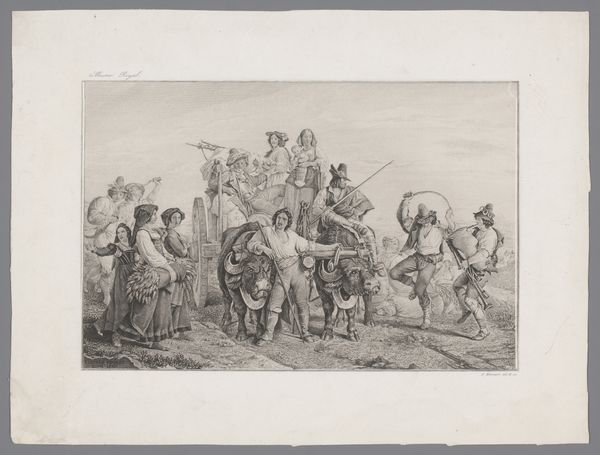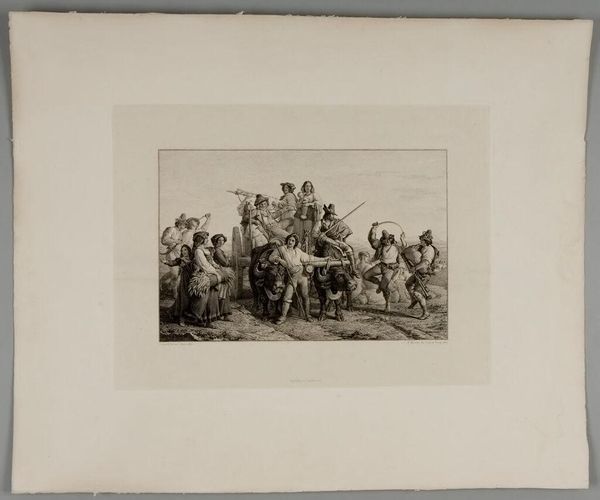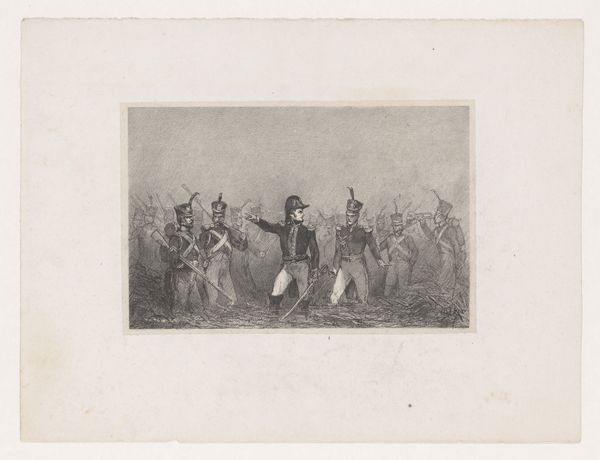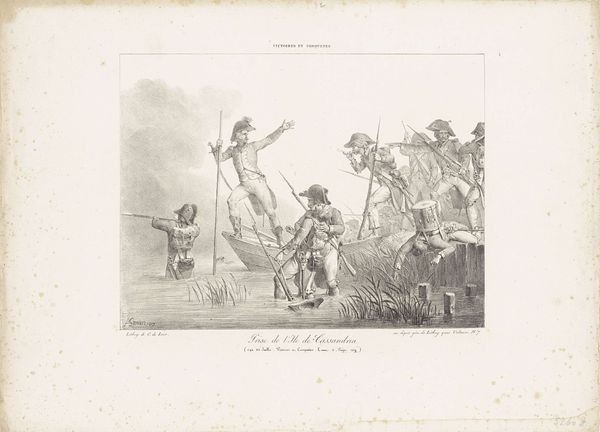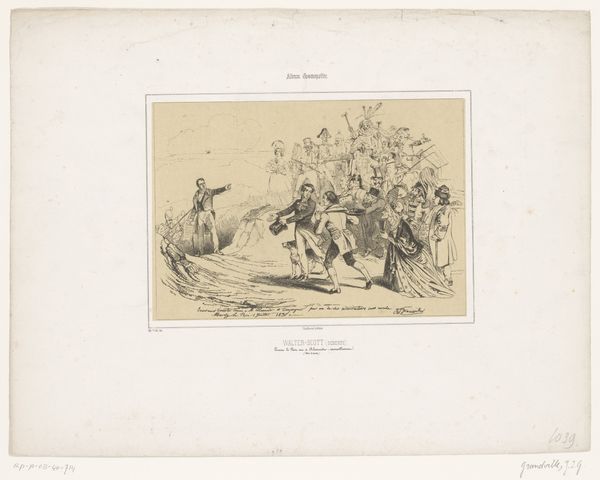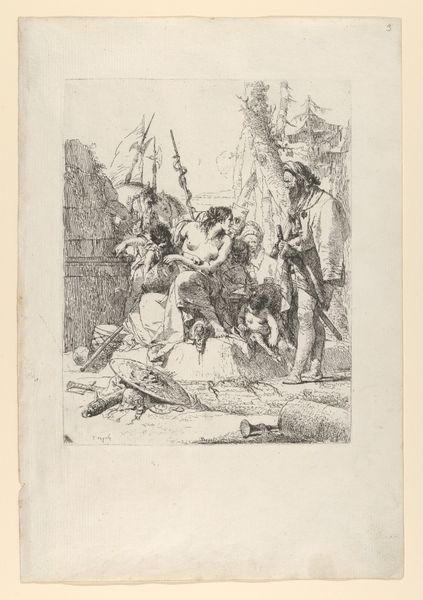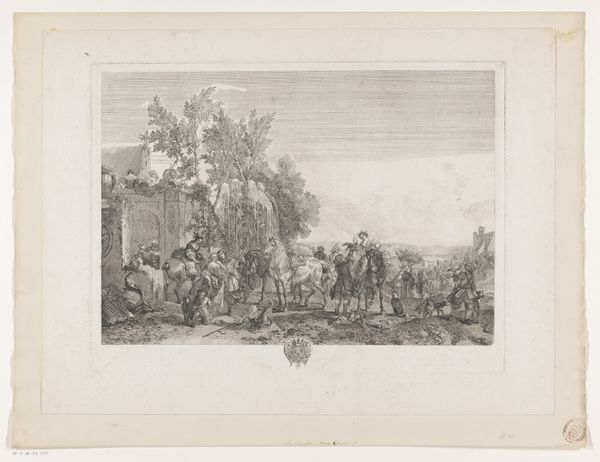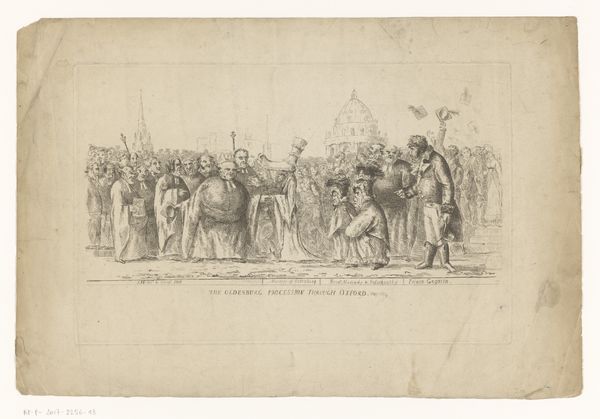
print, engraving
# print
#
pencil sketch
#
landscape
#
figuration
#
romanticism
#
france
#
genre-painting
#
engraving
Dimensions: 5 15/16 x 8 15/16 in. (15.08 x 22.7 cm) (image)8 13/16 x 11 9/16 in. (22.38 x 29.37 cm) (sheet)12 3/4 x 10 in. (32.39 x 25.4 cm) (mount)
Copyright: Public Domain
Editor: So, here we have Louis Léopold Robert's "Les Moissonneurs dans Les Marais Pontins," created around 1830. It's an engraving, and what immediately strikes me is the communal feeling. The figures seem almost staged, yet engaged in this very active scene. What sort of story do you see embedded within the symbols here? Curator: I see a return to pastoral ideals, draped in Romantic sensibility. Robert seems fascinated by the enduring cultural script of harvest, presenting us with archetypes of labor and leisure. Do you notice how the figures seem both particular, with detailed features, and representative of something larger? The bagpiper, the families with their bounty… these are emblems. Editor: I do. The bagpiper seems a very direct symbol. It does feel a little performative, almost like they're putting on a play, or solidifying these Pontine marshes with shared symbols. Curator: Exactly! And consider the oxen: their brute strength becomes synonymous with the Italian landscape itself, and these traditions that bind them together with music, harvest. Don’t you think this speaks to an enduring continuity of labor, land, and the celebration thereof, an appeal to what the fields once were, the values of people past? Editor: Definitely, now I see this more clearly! Thank you, I didn’t see past its immediate genre scene aesthetic until you explained the symbols embedded inside! Curator: My pleasure. Seeing the cultural memory within such images helps us decode our own assumptions about the rural past. We've started uncovering layers today and looking into the land’s memories, but the conversation certainly isn't finished!
Comments
No comments
Be the first to comment and join the conversation on the ultimate creative platform.
